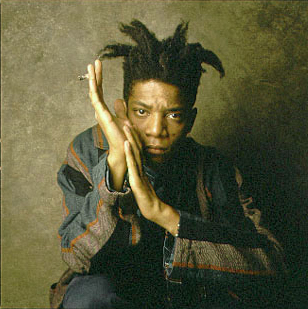A native of Brooklyn, Jean-Michel Basquiat (1960–1988) revolutionized the art world with his bold and expressive works. Born to a Haitian father and mother of Puerto Rican descent, Basquiat developed an appreciation for art as a child and began drawing at an early age through visits to the Brooklyn Museum of Art with his mother. He first gained recognition as a street artist in the late 1970s when he and friend Al Diaz created the graffiti tag “SAMO”, which appeared all over the Lower East Side of Manhattan.
At just 19 years old, Basquiat and his work were featured in “Times Square Show,” a group exhibition in 1980 that kick-started his career. His unique art style received critical acclaim, and in March 1982, Basquiat had his first solo exhibition. Soon his paintings were selling for tens of thousands of dollars, he was exhibiting worldwide, and he began to surround himself with celebrities and artists, including Andy Warhol. His vibrant artworks, characterized by bold colors, expressive imagery, and a distinctive use of words and phrases, explored themes of identity, racism, and urban culture.
As Basquiat’s wealth and popularity increased, he struggled with mental illness, including issues of addiction. On August 12, 1988, he died of a heroin overdose at just 27 years old. His obituary in The New York Times read: “Regarded by many contemporary art experts as a genius, Jean-Michel Basquiat was remembered as a man who pursued every aspect of his life with drive and devotion, including those that were destructive.”
